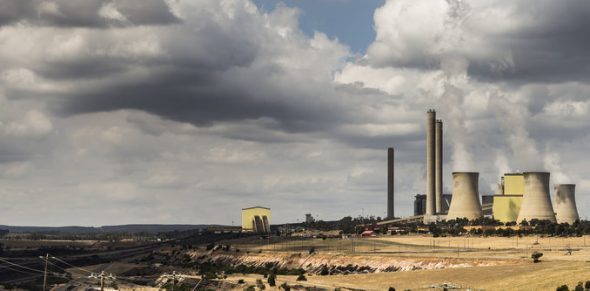
Australia watched an internal political brawl splashed across the front pages last week, as Energy and Environment Minister Josh Frydenberg was shouted down by some of his colleagues for even suggesting that a particular policy might be considered as a way to reduce carbon emissions. It served as a reminder – as if we needed another one – that climate policy is still a wild ride in Australian politics.
At the heart of the issue was an emissions intensity scheme for the electricity sector, which would encourage cleaner forms of electricity. The promising young Liberal Party talent suggested it might be examined as part of a review of the Federal Government’s climate policies in 2017.
Despite expert analysis showing the policy could shave billions of dollars off power bills over the course of a decade – as well as support for the idea from Australia’s Chief Scientist Alan Finkel and many energy and business organisations – an emissions intensity scheme now appears dead, buried and cremated. I guess they don’t call it the silly season for nothing.
And as state and federal Energy Ministers gathered for the COAG Energy Council yesterday, it is hard to shake the feeling that the events of last week have left us up a certain kind of creek, only to find that we have thrown away many of our best paddles.
There is a history of bipartisanship in energy policy, along with close working relationships between Energy Ministers. The early signals from Minister Frydenberg and Shadow Climate Change and Energy Minister Mark Butler were very good. Recent events risk a breakdown in this cooperation.
While the political barney makes for great entertainment, the stakes are high for future investments in energy generation, which are fundamentally capital-expensive and long lived. Much about our energy system is changing, but this remains the same.
Unfortunately, the recent political games around energy don’t fill private investors in new energy generation with much confidence. The consequence has been under-investment in the energy sector, and this was the conclusion of Chief Scientist Alan Finkel in his preliminary report to government last week. This under-investment ultimately means consumers will be worse off, unnecessarily driving up the cost of the energy transition and causing market instability. And if we don’t start building new power stations for the future we will have real trouble keeping the lights on.
A variety of market fundamentals are already pointing us in an irreversible direction. Renewable energy like wind and solar is now competitive with new coal and gas generation. But renewable energy is still competing in the energy market with old coal-fired power, built and paid for by taxpayers many decades ago.
Around 70 per cent of the coal power plants across the country are at or beyond their planned expiry date. The private owners of Northern coal-fired power station in South Australia and the Hazelwood power plant in Victoria’s Latrobe Valley have already committed to closing these plants due to some fundamental economics: as they get older, they get more expensive to run and maintain.
Many more will close over the next few decades, irrespective of the opinions of some of our parliamentarians. Without clear and long term policy and careful planning these closures will create chaos for local communities, higher prices for consumers and continued under-investment in the new generation that will take their place.
The policy certainty that does exist mostly relates to the national Renewable Energy Target (RET) which helps overcome the uneven playing field in the energy sector, allowing new renewable energy to compete with old taxpayer-funded power plants. The current RET was amended in 2015 and now enjoys some rare bipartisanship to 2020. Major energy companies are mobilising to meet their obligations under the RET and developers are readying billions of dollars’ worth of wind and solar projects for construction.
But 2020 is coming fast, our power stations are getting older and our climate commitment under the Paris commitment looms large. Australia needs a plan for the longer term – a future where we are using more renewable energy, storing our power with batteries and using a smarter and stronger network.
This week a variety of people started digging into the assumptions in the government analysis that declared an emissions intensity scheme was the cheapest way to cut pollution across the power system. RenewEconomy’s Editor Giles Parkinson posted a summary of where the modelling went sharply off course and why some of its conclusions are questionable. When you take all this into account, an extended Renewable Energy Target beyond the end of the decade is suddenly a highly competitive option.
If we are serious about meeting our emissions reduction commitments, this will require an open-mindedness about the policy options, a sense of cooperation between the major parties, and particularly between the states and the Commonwealth. This week’s COAG Energy Council was helpful in moving some specific reforms forward, but underlying tensions remain. The economic potential in Australia’s world-class renewable resources is obvious, but if the silly season antics continue into the new year, investors will look elsewhere. And energy consumers will pay a heavy price in the decades to come.
Kane Thornton is Chief of Clean Energy Council.







